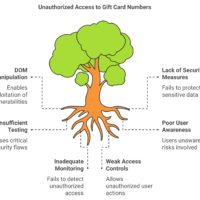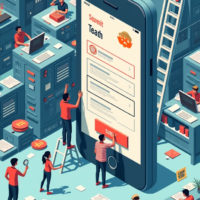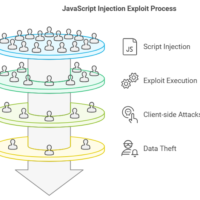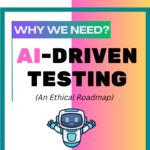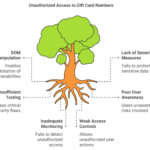If you’ve been anywhere near the tech world lately, you’ve probably heard the buzz around AI (Artificial Intelligence) and ML (Machine Learning) in software testing. It’s like the cool kid in class that everyone wants to hang out with, and for good reason! So, let’s look into how AI and ML are changing the game in testing.
As Alan Turing once said,
“We can only see a short distance ahead, but we can see plenty there that needs to be done.”
With AI and ML, we can see further and do more!
1. Predictive Testing and Defect Management
Mind Map: Predictive Testing Process & Defect Management
Here’s a step-by-step visualization of a technique for predictive testing process:
Predictive testing is one of the most exciting areas where AI and ML shine. By analyzing historical data, machine learning algorithms can identify patterns and trends that human testers might miss. This helps in predicting potential defects before they manifest in the software.
Here are two real-life examples of bottlenecks commonly encountered in predictive testing and defect management, along with approaches to problem-solving:
Example 1: Bottleneck in Data Collection & Insufficient Historical Data for New Features
Scenario:
A large e-commerce application releases new features frequently. When predictive testing is implemented, there’s a lack of sufficient historical defect data for recently added features, such as an advanced search filter or a new payment integration. Without historical data, ML models struggle to predict defects accurately for these components, leading to lower confidence in the predictions.
Solution:
- Utilize Similar Feature Data: Borrow defect data from similar features or modules, such as using search data for filter functionality or payment gateway data for new payment integrations.
- Implement Short-Term Manual Observation: Encourage manual testers to report defects more rigorously for new features during the initial releases. This helps build an early dataset.
- Continuous Monitoring and Early Alerts: Set up automated monitoring to capture any unexpected behavior or performance issues, so new issues can be logged early on and fed back into the model for more precise predictions.
This approach provides the model with sufficient information to start learning from real data, reducing prediction inaccuracy and enabling proactive defect management for new features.
Example 2: Bottleneck in Data Analysis – High False Positives in Defect Prediction
Scenario:
An ERP system’s predictive testing model is set up to flag high-risk modules based on historical defects and usage data. However, it begins generating too many false positives—modules flagged as high-risk do not end up having critical issues upon testing. This results in a significant amount of time and resources wasted on unnecessary testing, delaying other critical tasks.
Solution:
- Adjust ML Model Parameters: Refine the model’s sensitivity and weightings for defect prediction, possibly by reducing emphasis on less critical defect patterns. This adjustment will help in minimizing false positives.
- Incorporate Domain-Specific Insights: Leverage domain knowledge to adjust model criteria, focusing on failure types most impactful to ERP operations, such as data integrity errors rather than minor UI bugs.
- Implement Feedback Loops: Continuously review flagged issues versus actual defects found, feeding this analysis back into the ML model for further calibration. By refining the model iteratively, it becomes better at distinguishing genuinely high-risk modules.
By tackling the false positive issue through careful model adjustment and incorporating domain expertise, the team can more effectively prioritize testing efforts and allocate resources only to genuinely high-risk areas, enhancing efficiency and predictive accuracy.
2. AI-Powered Tools for Intelligent Test Automation
When it comes to intelligent test automation, several AI-powered tools are leading the charge. Let’s explore a few of them:
| Tool | Key Features | Best For |
|---|---|---|
| Testim | AI-driven test creation, maintenance, and execution | Web and mobile applications |
| Mabl | Automated testing with ML insights | CI/CD pipelines |
| Applitools | Visual AI testing to catch UI issues | Visual regression testing |
| Katalon | Integrated environment for API, web, and mobile testing | All-round testing needs |
| Kusho AI | AI-powered platform for automated API testing, generates comprehensive test suites, integrates with CI/CD pipelines | API testing |
| Kane AI | AI-powered end-to-end testing assistant, natural language test creation, multi-language code export, seamless integration with tools like Jira and Slack | End-to-end testing |
| Functionize | Intelligent test case generation, automated test script maintenance, self-healing scripts, predictive analytics | Comprehensive testing |
| TestCraft | AI-driven test automation, visual test creation, self-healing tests | Web applications |
| Test.ai | AI-driven test case generation, execution, and analysis | Comprehensive testing |
| AccelQ | AI-powered test automation, continuous testing, seamless integration with CI/CD tools | Continuous testing |
| TestGrid.io | Cloud-based end-to-end testing solution, supports web, mobile, and API testing | All-round testing needs |
| SonarCloud | Code quality and security, integrates with CI/CD pipelines, real-time feedback | Ensuring code quality and security |
These tools leverage AI to enhance the efficiency and effectiveness of test automation, making them invaluable for modern software development processes.
3. Benefits of Using AI and ML in Testing
Let’s break down the key benefits of integrating AI and ML into your testing processes:
- Efficiency: Automating repetitive tasks frees up time for testers to focus on more complex scenarios.
- Accuracy: AI algorithms can analyze vast amounts of data much faster than a human could, leading to more accurate predictions and analyses.
- Continuous Improvement: With ongoing data analysis, teams can constantly refine their testing strategies and focus on areas that require more attention.
Different Viewpoints
While the benefits are clear, it’s essential to consider different viewpoints. Some argue that reliance on AI may lead to decreased human involvement in testing, potentially resulting in overlooked nuances that only a human tester can catch. Others believe that AI should be seen as a tool to enhance human capabilities rather than replace them. As author Isaac Asimov said, “I do not fear computers. I fear the lack of them.”
Practical Example: AI in Action
Let’s say your team is working on a new feature for a social media app. You can leverage ML algorithms to analyze user behavior data from previous versions of the app. By understanding how users interacted with similar features, you can predict potential usability issues and address them proactively.
Tips for Implementing AI and ML in Testing
- Start Small: Begin with a specific area of your testing process to integrate AI or ML and gradually expand.
- Educate Your Team: Ensure your team understands the capabilities and limitations of these technologies.
- Measure Success: Track the impact of AI and ML on your testing process to refine your approach continuously.
Related Articles for Deeper Learning
- The Role of AI in Software Testing – AI in Software Testing | What it is & how to use AI in Testing.
- Understanding Machine Learning for Test Automation – Machine Learning for Automation Testing
Graph: The Evolution of Testing with AI
| Testing Method | Traditional Testing | Automated Testing | AI/ML-Driven Testing |
|---|---|---|---|
| Speed | Slow | Fast | Very Fast |
| Accuracy | Moderate | High | Very High |
| Predictive Insights | Low | Moderate | High |
| Adaptability | Low | Moderate | Very High |
Conclusion
As we embrace the future of software testing, it’s clear that AI and ML are not just passing trends; they are reshaping our approaches and improving our outcomes. While it’s essential to be cautious about over-reliance on technology, the potential benefits are too significant to ignore.
So, as we step into this new era, let’s remember that while AI and ML can do remarkable things, it’s our human intuition and creativity that will continue to drive true innovation in testing.
Let’s keep the conversation going! What are your thoughts on AI and ML in testing? Have you tried any AI-powered tools? Share your experiences in the comments below!


